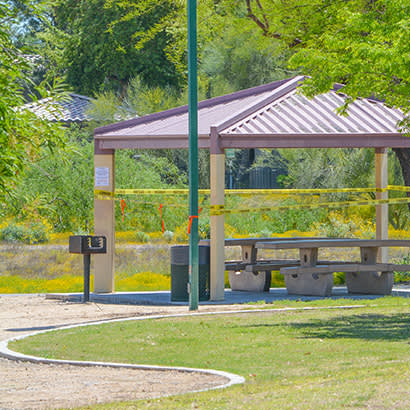
For an enhanced digital experience, read this story in the ezine.
Parks and recreation has been a vital respite during the coronavirus (COVID-19) pandemic. With millions of acres of open space and thousands of miles of trails under their watch, local park and recreation agencies have been the one place where people can stay physically active, take a deep breath and reconnect with nature during these trying times. Little of this would be possible without the tireless efforts of the hundreds of thousands of professionals who keep our parks open and safe for all to enjoy.
In late March, NRPA launched a new survey series to track how COVID-19 is affecting park and recreation agencies across the nation. Each week, we send the NRPA Parks Snapshot questionnaire to park and recreation leaders to see what is open, closed, how they are promoting safe park usage and what challenges they are facing.
By mid-April, we saw a clear pattern of park and recreation amenities that were and were not open. For example, more than 7 in 10 park and recreation agencies kept all of their parks open and 9 in 10 reported that their trail networks remained accessible to the community for walking, running and biking. On the other end of the spectrum, virtually every other park and recreation amenity had closed; including playgrounds, outdoor sports fields and courts, and skateparks.
Parks Snapshot Data
Keeping parks as a safe option for recreation means making sure visitors are following physical distancing guidelines from the Centers for Disease Control and Prevention, along with those from state and local health officials. Parks Snapshot survey respondents told us that their physical distancing efforts included:
- Signage alerting to physical distancing guidelines
- Removing recreation amenities that promoted congregating (e.g., basketball nets, picnic tables)
- Deploying agency staff to serve as park ambassadors who educate users on proper distancing practices.
Closed recreation centers, gyms and aquatic centers have deprived many people of their favorite fitness and well-being opportunities. To fill this void, more than 3 in 5 park and recreation agencies had launched virtual recreation programming by mid-April that they delivered online (through YouTube and social media) and on public access TV channels. Common virtual recreation programming topics include:
- Family engagement activities
- Fitness classes
- Self-care and well-being topics
- Education classes; including literacy, STEM, environment
Health and wellness for all is the essence of parks and recreation and this crisis has highlighted how P&R professionals make our communities healthy and resilient. One example is how many agencies have contributed more broadly to their communities’ emergency response to COVID-19. By mid-April, 2 in 5 local park and recreation agencies were serving their community in many ways, including:
- Serving or distributing food to older adults and/or families
- Opening recreation centers and other agency facilities to serve as emergency shelters
- Providing childcare to the children of essential agency staff, healthcare providers and first responders
P&R agencies have risen to the challenge by making sure their communities continue to have access to safe outdoor recreation opportunities. Sharing ideas and best practices has never been more vital. I encourage you to participate in these surveys and to continue the conversation on NRPA Connect.
Kevin Roth is Vice President of Research, Evaluation and Technology at NRPA.

